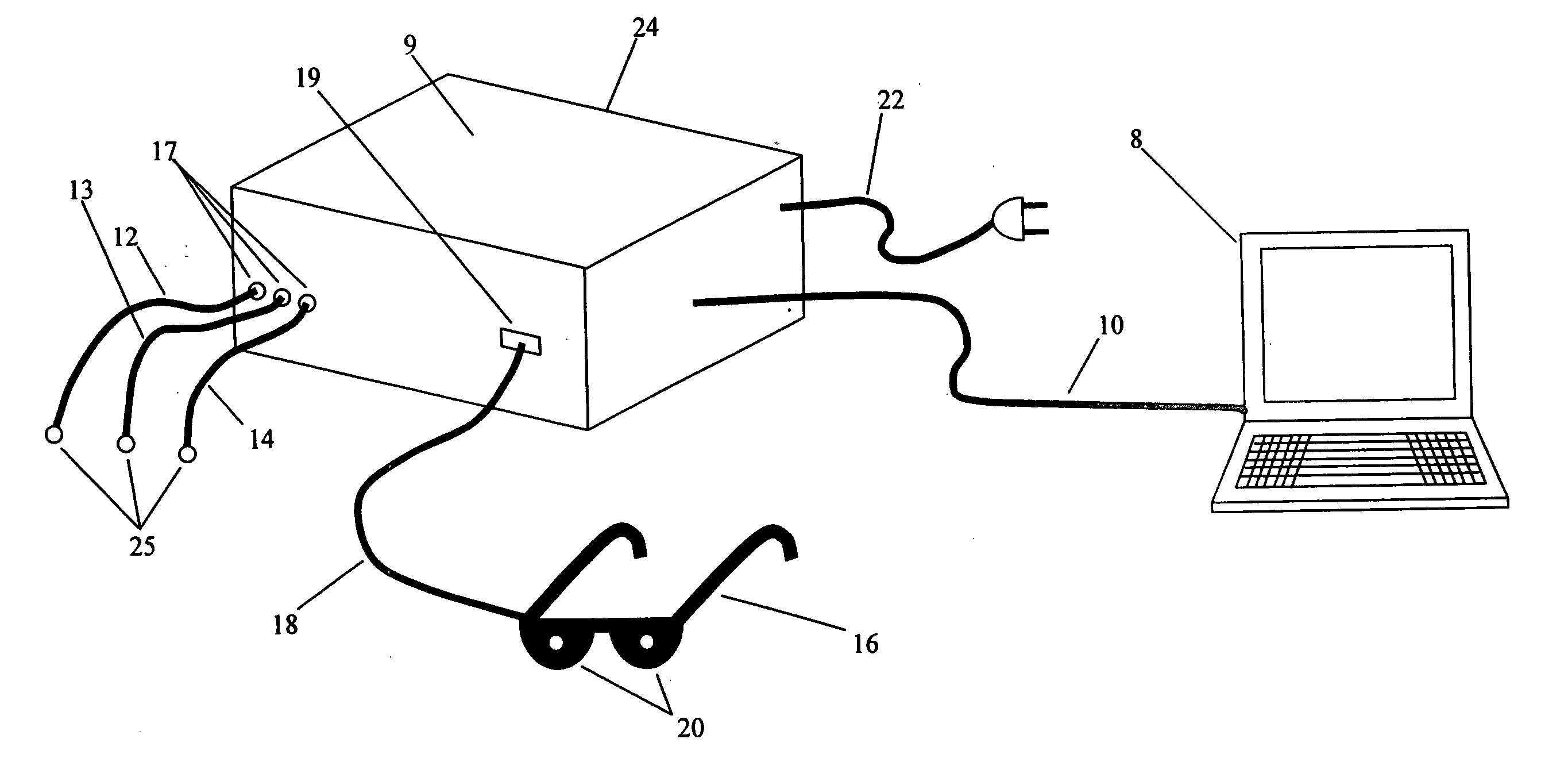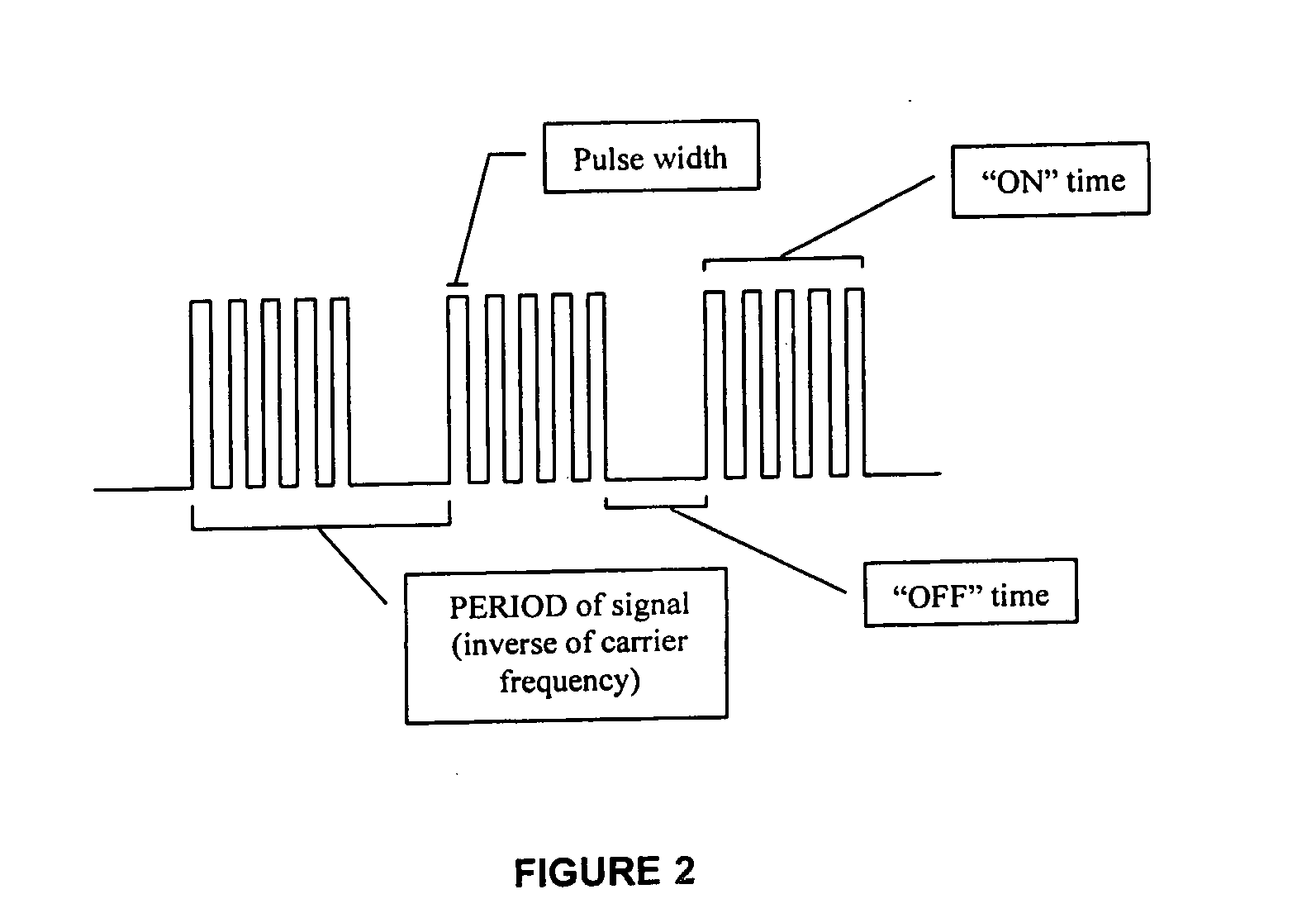Method and apparatus for utilizing amplitude-modulated pulse-width modulation signals for neurostimulation and treatment of neurological disorders using electrical stimulation
- Summary
- Abstract
- Description
- Claims
- Application Information
AI Technical Summary
Benefits of technology
Problems solved by technology
Method used
Image
Examples
Embodiment Construction
[0049] The present invention is directed towards a method and an apparatus suitable for the treatment of neurological dysfunctions.
[0050] The term “optical unit” is intended to define an apparatus that is used on or in close proximity to the eyes. By close proximity, it is meant a distance from the eyes of a subject that is effective for the transmittal of a light pulse into the eyes of the subject. Preferably, close proximity will not exceed one foot in distance from the subject. The structure of the optical unit may be worn on the face of the patient, such as optical device or goggles, or it may be located in a separate structure, such as a stand that is held near the face or even a hand-held mask. Further, the optic unit may be placed at an angle to the eyes of the subject. Additionally, the optic unit may be positioned behind the subject and use mirrors or other reflective devices (such as a white wall) to reflect the light pulse into the eyes of the subject. However, in no way...
PUM
 Login to View More
Login to View More Abstract
Description
Claims
Application Information
 Login to View More
Login to View More - R&D
- Intellectual Property
- Life Sciences
- Materials
- Tech Scout
- Unparalleled Data Quality
- Higher Quality Content
- 60% Fewer Hallucinations
Browse by: Latest US Patents, China's latest patents, Technical Efficacy Thesaurus, Application Domain, Technology Topic, Popular Technical Reports.
© 2025 PatSnap. All rights reserved.Legal|Privacy policy|Modern Slavery Act Transparency Statement|Sitemap|About US| Contact US: help@patsnap.com



